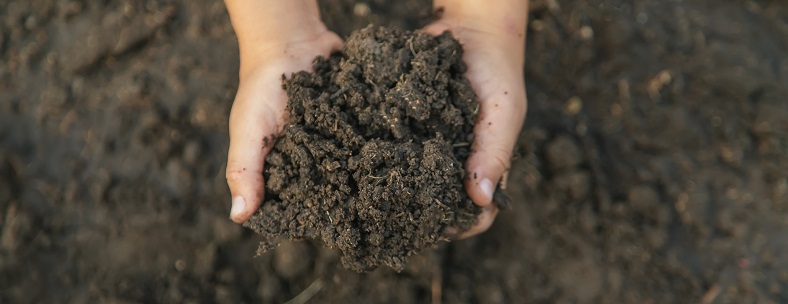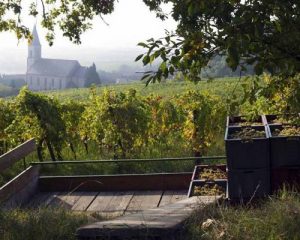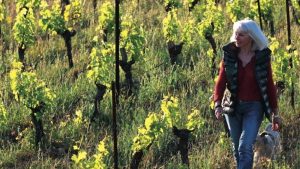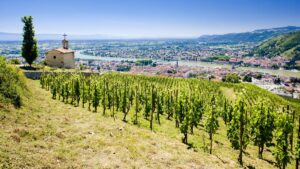
Fast becoming a real selling point in the mondovino, a ‘terroir’ influences its resulting wine in many ways. It is a concept that cannot really be translated, and includes elements such as the climate, topography and even the chosen grape variety, though the most important aspect is undoubtedly the soil. Here, we’re going to look at the influence these attributes can have on wine by considering three extraordinary terroirs. All of these share the benefits of respectful and low-intervention vinifications. The wine makers in question let their terroirs fully express themselves.
The kimmeridgian marl of Vaudésir (Chablis)
A denomination that was recognised in 1770, the Vaudésir grand cru boasts of rare relief in Burgundy, with particularly steep slopes. Located, like the six other grands crus, on the right bank of the Serein, the vines enjoy a double exposure (south and south-west), allowing the wine makers to play with the grape maturity depending on the vintage. The soil of this grand cru is composed of kimmeridgian marl (the pride of Chablis) rich in fossils that confer the famous mineral quality – this is the element that brings purity and finesse to the wines. The grapevines planted here are Chardonnay which, with its reputation as quite a neutral variety, allows the terroir to leave its mark more strongly compared to a more aromatic variety.
An excellent domain to help you understand the complexity of this grand cru is Domaine Louis Michel & Fils. With a vinification in stainless steel vats, the wine maker avoids all potential alterations of the aromas that come from the terroir. The result is endlessly elegant. The wine has a dense mouthfeel with sumptuous flavour that finishes on a saline, mineral note.
Buy the 2016 Vaudésir from Domaine Louis Michel & Fils
See the other Vaudésir wines available at iDealwine
The schist soils of the Côte du Py (Morgon)
Whilst the Beaujolais is primarily known for the granite soils so propitious to the growing of Gamay (the region’s emblematic grape variety), the Côte du Py in Morgon is an exception. With a high concentration of schist, known as ‘roches pourries’, the wines produced here are unlike others made in the region. Especially rich in iron and manganese, schist gives denser and more intensely coloured grape must, developing liquorice aromas.
All of these characteristics are found in the James cuvée by jean Marc Burgaud. Rare in its richness and concentration, this one is only made in its best vintages. It has an intense colour, the nose subtly blends fruits and spices, whilst the palate is indulgent (though not excessively so!). This is a wine that will reveal its full potential after a few years of ageing.
Buy the 2016 Côte du Py cuvée from Domaine Jean Marc Burgaud
See the other Côte du Py available at iDealwine
The cocktail of marl, chalk and iron in Furstentum (Alsace)
Gewurztraminer’s natural home, the Furstentum grand cru is a splendid mix of marl, yellow chalk and red sandstone rich in iron. Those who originally recognised the potential of this terroir had to work it with horses because of the steep drops and the rocks strewn across the ground. But they weren’t wrong since the south/south-west exposure is ideal and allows the vines to draw all the sun necessary for the grapes to ripen well.
We recommend discovering Furstentum with the Bott-Geyl domain. With as little intervention as possible during vinification, its Gewurztraminer is the very expression of this special terroir. At once subtle and light, the wine evolves towards delicious notes of honey and candied fruits after a few years in the cellar.



